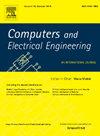利用新型控制器和RIME优化器改善两区火电系统的频率和电压稳定性
IF 4
3区 计算机科学
Q1 COMPUTER SCIENCE, HARDWARE & ARCHITECTURE
引用次数: 0
摘要
本文提出了一种集成负载频率控制(LFC)和自动电压调节器(AVR)过程的新方法,以提高两区非再热火电系统的频率和电压稳定性。在本研究中,我们提出了一种新的比例导数-(1+二重积分)(PD-(1+II))控制器,该控制器通过利用最近创建的Rime优化算法(Rime)进行优化。这代表了RIME算法和PD-(1+II)控制器首次在耦合LFC-AVR系统中使用。我们的综合研究涵盖了六个不同的场景,包括AVR系统调谐、LFC系统调谐、LFC-AVR系统联合调谐、干扰分析、非线性分析和参数灵敏度分析。将所提出的rime调谐PD-(1+II)控制器与已有的技术(如非线性阈值接受(NLTA)算法及其多目标版本(MONLTA)调谐PID控制器,即MONLTA-PID和NLTA-PID控制器)进行比较分析。仿真结果表明,rime调谐PD-(1+II)控制器始终优于现有的控制器。与现有方法相比,它在超调降低(频率偏差降低100%,终端电压降低30%)和更快的稳定时间(频率控制降低50%,电压控制降低30%)方面表现出卓越的性能。此外,控制器在各种干扰、非线性和参数变化的情况下表现出弹性,突出了其在多种操作场景中的适应性和可靠性。统计分析进一步验证了该方法的有效性和可靠性,结果表明,该方法优于现有的优化算法,包括大猩猩部队优化算法(GTO)和鲸鱼优化算法(WOA),其中RIME算法的平均ITSE值为0.0881,而GTO算法为0.1023,WOA算法为0.1057。本文章由计算机程序翻译,如有差异,请以英文原文为准。
Frequency and voltage stability improvement in a two-area thermal power system using a novel controller and RIME optimizer
This work presents a novel method for integrating the Load Frequency Control (LFC) and Automatic Voltage Regulator (AVR) processes to enhance frequency and voltage stability in two-area non-reheat thermal power systems. In this study, we present a novel Proportional Derivative-(1+Double Integral) (PD-(1+II)) controller, which is optimized through the utilization of the recently created Rime Optimization Algorithm (RIME). This represents the first time that the RIME algorithm and the PD-(1+II) controller are used in the context of coupled LFC-AVR systems. Our comprehensive research encompasses six distinct scenarios, including AVR system tuning, LFC system tuning, combined LFC-AVR system tuning, disturbance analysis, nonlinearity analysis, and parameter sensitivity analysis. A comparative analysis is conducted between the proposed RIME-tuned PD-(1+II) controller and established techniques such as the Nonlinear Threshold Accepting (NLTA) algorithm and its multi-objective version (MONLTA) tuned PID controllers, i.e. MONLTA-PID and NLTA-PID controllers. The simulation results demonstrate that the RIME-tuned PD-(1+II) controller consistently outperforms existing techniques. It exhibits superior performance in terms of overshoot reduction (100 % decrease in frequency deviation and 30 % decrease in terminal voltage) and faster settling times (50 % decrease in frequency control and 30 % decrease in voltage control) when compared to current methods. Furthermore, the controller demonstrates resilience in the presence of a diverse range of disturbances, nonlinearities, and parameter variations, highlighting its adaptability and reliability in a multitude of operational scenarios. The efficacy and reliability of the proposed methodology are further substantiated by statistical analysis, which demonstrates that it outperforms existing optimization algorithms, including the Gorilla Troops Optimizer (GTO) and the Whale Optimization Algorithm (WOA), with the RIME algorithm achieving an average ITSE value of 0.0881 compared to 0.1023 for GTO and 0.1057 for WOA.
求助全文
通过发布文献求助,成功后即可免费获取论文全文。
去求助
来源期刊

Computers & Electrical Engineering
工程技术-工程:电子与电气
CiteScore
9.20
自引率
7.00%
发文量
661
审稿时长
47 days
期刊介绍:
The impact of computers has nowhere been more revolutionary than in electrical engineering. The design, analysis, and operation of electrical and electronic systems are now dominated by computers, a transformation that has been motivated by the natural ease of interface between computers and electrical systems, and the promise of spectacular improvements in speed and efficiency.
Published since 1973, Computers & Electrical Engineering provides rapid publication of topical research into the integration of computer technology and computational techniques with electrical and electronic systems. The journal publishes papers featuring novel implementations of computers and computational techniques in areas like signal and image processing, high-performance computing, parallel processing, and communications. Special attention will be paid to papers describing innovative architectures, algorithms, and software tools.
 求助内容:
求助内容: 应助结果提醒方式:
应助结果提醒方式:


